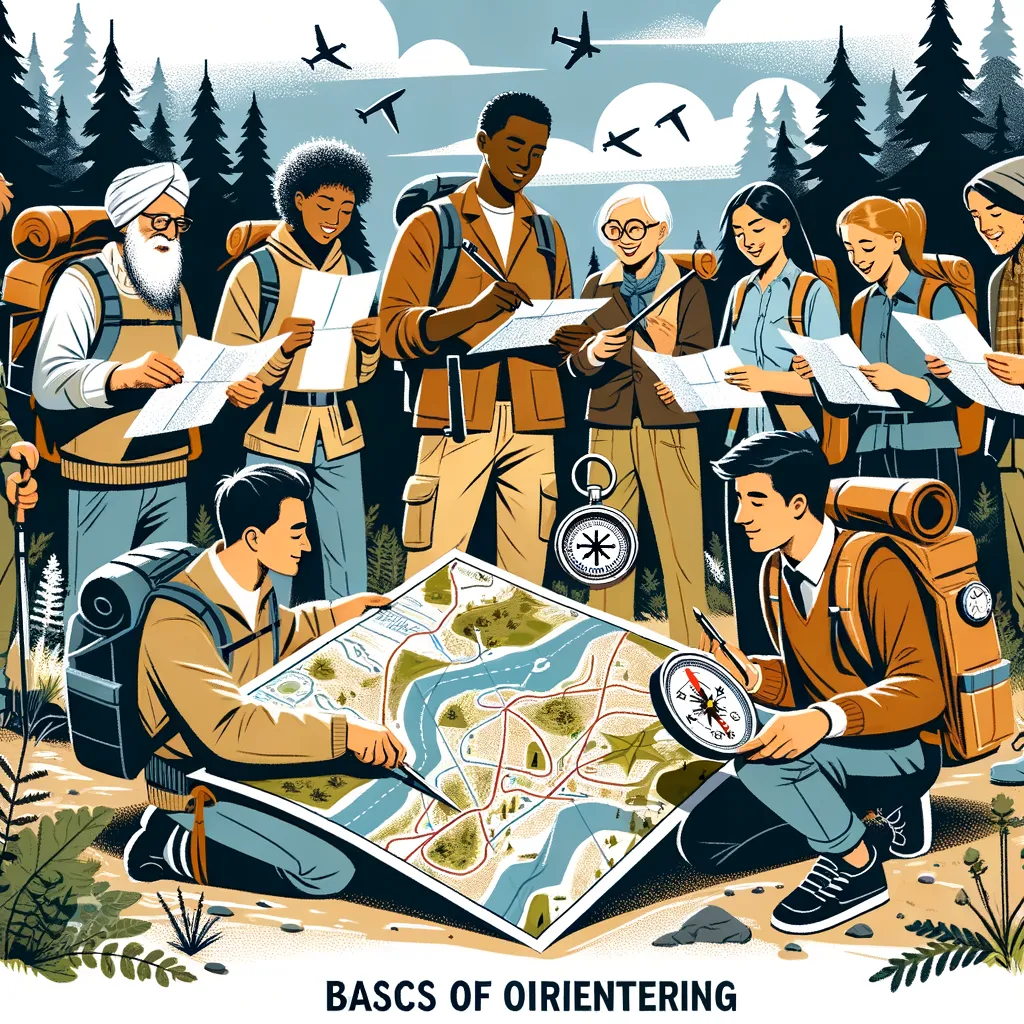Master the Basics of Orienteering: A Comprehensive Guide for Parents
Welcome, adventurous parents! If you’re looking to introduce your family to the thrilling world of orienteering, you’ve landed in the perfect spot. Orienteering is not just a sport; it’s an exhilarating adventure that combines physical activity with mental challenges, making it an ideal family bonding activity. In this comprehensive guide, we’ll walk you through the basics of orienteering, offering you practical tips and engaging ways to make this sport an exciting exploration for both you and your children.
What is Orienteering?
Orienteering is a fun, outdoor adventure sport that involves navigation between checkpoints using a detailed map and a compass. It can be done on foot, bike, or even skis, offering a versatile way to explore nature while challenging your mind and body. It’s a fantastic way to develop problem-solving skills, improve physical fitness, and enjoy the great outdoors.
Why Orienting is Great for Families
Engaging in orienteering as a family promotes teamwork, improves communication, and fosters a love for nature. It’s an inclusive activity that can be adapted to suit all age groups and fitness levels, making it accessible and enjoyable for everyone. Plus, it provides a great opportunity to teach your children valuable navigation skills and environmental awareness in a fun and exciting way.
Getting Started with Orienteering
Embarking on your orienteering adventure is easier than you might think! Here’s how to get started:
- Understand the Basics: Familiarize yourself with the basic principles of map reading and compass use. There are plenty of resources available, including online tutorials and local orienteering clubs, that can provide beginner-friendly guidance.
- Choose the Right Gear: Invest in a good quality compass and a detailed map of the area you plan to explore. Comfortable, weather-appropriate clothing and sturdy footwear are also essential to ensure a safe and enjoyable experience.
- Start Small: Begin with shorter, simpler courses to build your confidence and skills. Many local parks offer permanent orienteering courses suitable for beginners.
- Join an Orienteering Club: Connecting with a local club can provide valuable support and resources. Clubs often host beginner-friendly events and offer coaching to help new orienteers develop their skills.
Learning to Read a Map
Map reading is a fundamental skill in orienteering. Here’s a quick primer to get you started:
- Understand Map Symbols: Orienteering maps use standardized symbols to represent different types of terrain and features. Spend some time familiarizing yourself with these symbols to read the map accurately.
- Learn to Orient the Map: Aligning your map with the surrounding terrain is crucial. Use your compass to align the map’s north with magnetic north.
- Identify Control Points: Control points are marked on the map with circles and are your destinations on the orienteering course. Learning to spot these and plan your route to reach them is a key skill.
Orienteering is an incredible way to explore the great outdoors, challenge yourselves, and bond as a family. By mastering the basics of map reading and navigation, you’re set to embark on countless adventures, discovering hidden treasures of the natural world and creating lasting memories together. Stay tuned for more tips on advancing your orienteering skills and making the most of your family’s outdoor adventures.
In the next section, we’ll dive deeper into advanced navigation strategies, finding the right orienteering events for your family, and tips for turning each orienteering outing into a memorable adventure. So, gear up and get ready to unlock the world of orienteering, where every direction leads to discovery and every step brings a new challenge.
https://en.wikipedia.org/wiki/Camping

5 Essential Tips for Parents Mastering Orienteering Basics
Welcome back, adventurous families! As you embark on your journey to mastering the basics of orienteering, it’s crucial to prepare adequately to ensure a smooth, enjoyable, and fulfilling experience for everyone involved. Here, we provide five essential tips that every parent should know before setting off on this exciting adventure. Let’s ensure your orienteering outings are not just explorations but cherished family moments full of learning and laughter.
1. Emphasize the Importance of Patience and Practice
Patience is key when starting with orienteering. Initially, it may seem daunting to both the parents and the children; however, with time and practice, it becomes easier and more enjoyable. Begin with simple exercises such as reading maps of familiar areas or using a compass during a walk in the park. Gradually introduce more complex orienteering tasks to boost confidence and skills progressively. Remember, every expert was once a beginner.
2. Equip Your Family with the Right Tools
While orienteering is accessible with minimal gear, having the right equipment can significantly enhance the experience. Invest in durable, weather-appropriate clothing to keep your family comfortable in different outdoor conditions. A reliable compass and up-to-date, detailed maps of your chosen area are indispensable. Consider lightweight backpacks for younger family members to carry their water, snacks, and perhaps their own compass, fostering independence and responsibility.
3. Safety First: Preparing for the Unexpected
Safety should always be a top priority. Teach your children basic safety practices such as staying within sight, recognizing landmarks, and what to do if they get separated from the group. Packing a first-aid kit, bringing sufficient water, and checking the weather forecast are simple yet crucial steps before heading out. Encouraging children to participate in these preparations can be a great learning opportunity about responsibility and safety awareness.
4. Choose the Right Course and Take It Slow
One of the beauties of orienteering is its scalability for all ages and skill levels. Start with beginner-level courses that focus more on the joy of participation rather than speed or competition. These courses are designed to be manageable and fun for newcomers, providing a positive introduction to the sport. As your family becomes more comfortable, you can gradually try courses that are more challenging and longer in distance. The key is to progress at a pace that keeps everyone engaged and eager to explore more.
5. Make Learning Fun: Gamify the Experience
Children learn best when they’re having fun, and the great outdoors is an excellent classroom. Turn the orienteering experience into a game with challenges, rewards, and plenty of encouragement. Set up mini-treasure hunts, have races to find the next control point, or create Bingo cards with different landmarks or symbols to find on the map. Not only does this approach make learning more engaging, but it also cultivates a love for outdoor activity and adventure.
Embracing the world of orienteering opens up endless possibilities for adventure, learning, and family bonding. By starting with these five essential tips, you’re setting the foundation for countless memorable experiences in the great outdoors. Orienteering is more than a sport; it’s a journey of discovery, teamwork, and personal growth. As you and your family become more adept at navigating the trails and understanding the maps, you’ll find that orienteering offers a unique blend of challenges, achievements, and fun. Let the adventure begin!
All the things Outdoors you should know. Learn more here
Disclaimer
The articles available via our website provide general information only and we strongly urge readers to exercise caution and conduct their own thorough research and fact-checking. The information presented should not be taken as absolute truth, and, to the maximum extent permitted by law, we will not be held liable for any inaccuracies or errors in the content. It is essential for individuals to independently verify and validate the information before making any decisions or taking any actions based on the articles.



